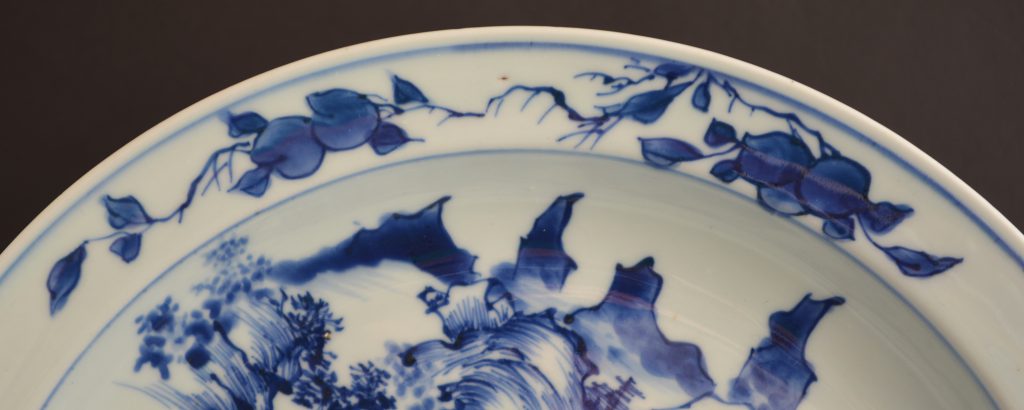
Kangxi c.1662 – 1674, Blue and White Porcelain Dish Painted in the ‘Master of the Rocks’ Style.
A late Transitional porcelain dish, early Kangxi period c.1662-1674. The thickly potted blue and white dish is painted in the ‘Master of the Rocks’ style with an extensive landscape.
SOLD
- Condition
- In excellent condition, typical minor chips to the footrim.
- Size
- Diameter : 28 cm (11 inches)
- Provenance
- N/A
- Stock number
- 24607
- References
- For a Kangxi Master of the Rocks plate from this group dated to c.1662-1674 see : Seventeenth Century Chinese Porcelain From The Butler Family Collection (Sir Michael Butler, Margaret Medley, Stephen Little, Art Services International,1990) page 145 plate 94. For a Kangxi 'Master of the Rocks' from this group from the collection of W.W. Winkworth. Carew-Shaw (1901-1998) see our 'Search' number 18472. A further Kangxi porcelain dish of this type but smaller number 17740.
Information
The Master of the Rocks Style :
The phrase Master of the Rocks is unfamiliar to many Chinese, it is another invented category used by western scholars and collectors to pigeon-hole groups of Chinese ceramics, rather like Kraakware or Celadon. However unlike either of these Master of the Rocks first coined by Gerald Reitlinger, is a clear, distinct group. This style lasted from about 1645 to 1690. The highly distinctive painting style consists of landscapes with massive powerful mountains in a linier technique. The style is, for want of a better word, ‘painterly’ and often includes distant mountains painted with a very wet brush that contrast with the linier mountains in the mid ground. The style usually employs a technique of blobby dots, either in the landscape or as a border. These dots are painted with a wet brush and have no outline. These designs were certainly inspired by late Ming scroll painters like Wang Jinazhng (active c.1628 – 1644). The same use of brush strokes in contour like parallels lines can be seen. Mountains with jagged peaks are piled up creating a dramatic structure. But where as many of the scroll painters are known, the ceramics artists are anonymous



